
Showing posts with label Ava Gardner. Show all posts
Showing posts with label Ava Gardner. Show all posts
June 28, 2011
Shrine de Gardner

August 3, 2010
"Mama Will Bark," a.k.a. Sinatra's career nadir
In memory of cheesemaster Mitch Miller, this repost:

Wikipedia entry:
"Mama Will Bark" is a novelty song written by Dick Manning and performed as a duet between Frank Sinatra and Dagmar in 1951. The song was recorded at the behest of Columbia Records A&R head Mitch Miller, who had been intrigued by the comic chemistry he perceived between Sinatra and Dagmar during her appearances on Sinatra's CBS television program, The Frank Sinatra Show.

The recording, which features off-key singing by Dagmar and sound effects of dogs barking, is commonly cited as an emblematic low point in Sinatra's troubled later years at Columbia. Sinatra himself later said of the song: "The only good it did me was with the dogs." Nonetheless, the single (which did not receive an album release) was a hit, nearly reaching the Top 20 on the Billboard singles chart.
The B-side to this May 10, 1951, crime against humanity? The Ava Gardner-inspired classic, "I'm a Fool to Want You" (the birth of Sinatra Career Phase II, in my humble onion).
April 3, 2010
Sinatra: Best of the Columbia Era

"Fans wait for a glimpse of Frank Sinatra, Los Angeles, 1944."
(The New York Times)


When they composed "All the Things You Are," Hammerstein and Kern were at the apex of their songwriting brilliance. "The dearest things I know a what you are" is one of the greatest romantic lines ever written.
(Sinatra 101: 101 Best Recordings and the Stories Behind Them, page 11)

A warmly passionate reading by Sinatra and a virtually flawless vocal performance. Axel Stordahl's orchestration perfectly complements the marvelous breath control and impeccable phrasing of the singer.
A high point in the collaborative work of Styne and Cahn, this ballad was written for the film It Happened in Brooklyn, starring Frank Sinatra.
(Sinatra 101: 101 Best Recordings and the Stories Behind Them, page 19)

"The Birth of the Blues" may be the first great recording of the mature Sinatra. Certainly a harbinger of things to come. On this track, Sinatra employs a rough guttural sound that he would call upon in the 1950s to "punch up" his swing tunes. This technique would serve Sinatra well for more than four decades.
(Sinatra 101: 101 Best Recordings and the Stories Behind Them, page 34)
-and an appropriate song in the context of his life. Gone was the innocent, naive singer of the previous decade. Burned by love, the singer is able to convey the darkness, the sadness, and the cynicism that would characterize much of his work in the years to come.
(Sinatra 101: 101 Best Recordings and the Stories Behind Them, page 35)

March 6, 2010
"Hello, Young Lovers"
 I find this Frank Sinatra performance of "Hello, Young Lovers" to be very poignant. The date was May 5, 1951, and it was on The Frank Sinatra Show. Sinatra's career was virtually unrecognizable from what it had been at its pinnacle in the mid-40s. At moments throughout this particular episode, Sinatra seemed to be trying way too hard; desperate even - smiling a little bit too easily and often, nervous, stumbling over his words in several places, not to mention the pencil-thin mustache. It's a little unnerving to watch a Sinatra who isn't confident. But I guess that's what happens to a guy when he falls from the very top of the Hollywood food chain, and everyone (but a few) kicks him as he falls.
I find this Frank Sinatra performance of "Hello, Young Lovers" to be very poignant. The date was May 5, 1951, and it was on The Frank Sinatra Show. Sinatra's career was virtually unrecognizable from what it had been at its pinnacle in the mid-40s. At moments throughout this particular episode, Sinatra seemed to be trying way too hard; desperate even - smiling a little bit too easily and often, nervous, stumbling over his words in several places, not to mention the pencil-thin mustache. It's a little unnerving to watch a Sinatra who isn't confident. But I guess that's what happens to a guy when he falls from the very top of the Hollywood food chain, and everyone (but a few) kicks him as he falls. More about The Frank Sinatra Show from this site:
More about The Frank Sinatra Show from this site:It was a low point in the singer's career. His record sales declining, dumped by his movie studio, his radio series canceled, and perhaps most frighteningly, sidelined for over a month with a ruptured vocal cord, Frank Sinatra was in the depths of despair. He was dogged by bad press, due to an affair with movie star Ava Gardner while still married to first wife Nancy. It didn't help that his thin skin and ill temper (not to mention an overindulgence in alcohol) sometimes fueled violent confrontations with reporters and photographers he felt had wronged him.
 So it was that, in 1950, Sinatra found himself casting about for a vehicle that could help him resuscitate his career. Television was the new thing and had helped a number of has-been entertainers, so why not give it a try?
So it was that, in 1950, Sinatra found himself casting about for a vehicle that could help him resuscitate his career. Television was the new thing and had helped a number of has-been entertainers, so why not give it a try?The show was plagued with problems right off the bat, suffering from disappointing ratings, a high turnover in personnel, and a shortage of sponsor support.
But on this evening, he had his voice. Sinatra sang "When You're Smiling," "If," a duet with June Hutton on "My Romance," and as a lonely figure, wringing his hands while strolling quickly out into the bright spotlight of a darkened stage, "Hello, Young Lovers." Maybe I read too much into these things, but it's as if he's appealing directly to his Bobby Soxer fans, who'd all grown up and lost interest, to like him anew ("Hey! Remember me?"):

January 29, 2010
"Why Try to Change Me Now"

"Why Try to Change Me Now" was composed by Cy Coleman (the music) and Joseph Allan McCarthy (the words) for Frank Sinatra. Sinatra recorded it on September 17, 1952. It was arranged by Percy Faith. More from Sinatra 101: The 101 Best Recordings and the Stories Behind Them:
Sinatra's last recording for Columbia Records--and appropriate in the context of his life. Gone was the innocent, naive singer of the previous decade. Burned by love, the singer is able to convey the darkness, the sadness, and the cynicism that would characterize much of his work in the years to come. (p. 35)
Sinatra would re-record it while under contract with Capitol Records for the No One Cares album in 1959.

Here is Cy Coleman's utterly charming, 1957 performance of "Why Try to Change Me Now," from something called "Art Ford's Greenwich Village Party," which appeared to be somewhat like a precursor to the Playboy After Dark TV program of the late '60s. Coleman, by the way, also wrote "Witchcraft" for Sinatra:
July 28, 2009
"Summer Wind"

Frank and Ava Gardner in 1951
"Summer Wind" was written in 1965 by Henry Mayer and Johnny Mercer. The version Frank Sinatra recorded was a stand out track on the album that found the aging crooner returning to the top (#1) of the pop charts, Strangers in the Night (1966). An electric organ figures prominently in the overall mix, the instrument's inclusion (along with electric bass guitar) being one of the concessions Sinatra made in order to be more relevant and contemporary. Described as having a "majestic sadness," it's one of those songs that seems to be biographical when done by Sinatra:
February 16, 2009
Twin Palms



Some background from a Los Angeles Times article and accompanying slide show:


 But not long after moving day, Sinatra had a change of heart. A sea change. He met Ava Gardner, the love of his life, and promptly left his wife Nancy, who begrudgingly granted him a divorce. Twin Palms soon became the setting for one of the 20th century's great romances, the amphitheater in which Sinatra and Gardner conducted their operatic affair. "Maybe it's the air, maybe it's the altitude, maybe it's just the place's goddamn karma," Gardner wrote in her 1990 autobiography, "but Frank's establishment in Palm Springs, the only house we really could ever call our own, has seen some pretty amazing occurrences."
But not long after moving day, Sinatra had a change of heart. A sea change. He met Ava Gardner, the love of his life, and promptly left his wife Nancy, who begrudgingly granted him a divorce. Twin Palms soon became the setting for one of the 20th century's great romances, the amphitheater in which Sinatra and Gardner conducted their operatic affair. "Maybe it's the air, maybe it's the altitude, maybe it's just the place's goddamn karma," Gardner wrote in her 1990 autobiography, "but Frank's establishment in Palm Springs, the only house we really could ever call our own, has seen some pretty amazing occurrences."


 Here's the portion of an AMC special called Legendary Hollywood Homes II in which Twin Palms is featured:
Here's the portion of an AMC special called Legendary Hollywood Homes II in which Twin Palms is featured:September 11, 2008
"September in the Rain"
 Written in 1937 by Harry Warren and Al Dubin, when leaves would actually turn brown as early as September on the North American continent, "September in the Rain" is probably the best song on one of my favorite Sinatra albums, Sinatra's Swingin' Session!!! (I love the exclamation points!!!). It is the centerpiece of the album and a great example of Nelson Riddle's style as an arranger.
Written in 1937 by Harry Warren and Al Dubin, when leaves would actually turn brown as early as September on the North American continent, "September in the Rain" is probably the best song on one of my favorite Sinatra albums, Sinatra's Swingin' Session!!! (I love the exclamation points!!!). It is the centerpiece of the album and a great example of Nelson Riddle's style as an arranger.And as a bonus, here are the Silver Beetles (John, Paul, George, and Pete Best) doing a version that can't even begin to compare with Sinatra/Riddle's, but at least it's an original interpretation. This is supposedly from an audition the group did for Decca Records. Yep, guitar groups were on their way out:
June 18, 2008
11 songs in a summer key (repost)
Just in time, and in random order (now with video!):

The opening moments of this are the aural equivalent of trying to look through the waves of heat coming off sun-drenched pavement. The guitars, drums, and synth kick in, and it's time for sun and fun. Ric Ocasek's lyrics say it all:
As a member of the MTV generation, I can't hear this and not think of the video, with it's vibrant, primary colors, and shimmering, aqua-blue pool.


With lyrical references to "blue suburban skies", "fish and finger pies in summer", and an overall sunny, exuberant mood, "Penny Lane" is fitting background music for the first days of summer, when there seems to be nothing but time. The song was recorded during the winter of 1966, and released as a single in February 1967. This was their first single since "Please Please Me" four years earlier that didn't hit #1 in England. The first time The Beatles appeared with facial hair in public was in the promotional film for this song. What a shock that must have been!



Did they (Brian Wilson) not write the soundtrack for the American teen, summer experience? If not them, who the heck did? The song was known as Brian's "pocket symphony" and was the beginning of the ill-fated Smile sessions which resulted in Brian's breakdown, from which it took him decades (literally) to recover. According to Steven Gaines's excellent Heroes and Villains, Brian first heard the word "vibrations" from his mother, Audree, when she "tried to explain why dogs bark at certain people and feel comfortable with others."
runners-up: "All Summer Long", "Surfer Girl"



Kool & the Gang managed to capture the essence of a sweltering hot day in the instrumentation used on "Summer Madness". The stereo/cross-channel reverbed organ, and that great, ascending synth line bring to mind images of melting Popsicles and children playing around open fire hydrants. "Summer Madness" was of course sampled and used in Jazzy Jeff & The Fresh Prince's "Summertime". Much like MC Hammer's "U Can't Touch This", "Summertime" really wouldn't have much structure or reason for being (from an artistic point of view) without the sample used. I like the Fresh Prince song, but after hearing "Summer Madness," not as much.
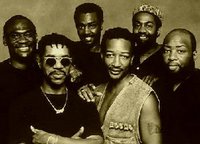
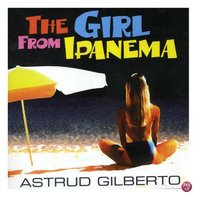
Jobim wasn't know as the Gershwin of Brazil for nothing. I discovered him via my interest in Frank Sinatra. They recorded together a couple of times between 1967 and 1970.
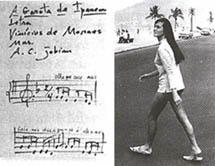
I actually prefer the Sinatra version (with Jobim).

Percy Faith and Orchestra live performance, circa 1960
Of all the songs on the list, this is the only one I might be a little
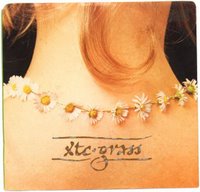
"Summer's Cauldron"
"Grass"
By most accounts, British new wave/rock/pop band XTC's experience of recording their October 1986 Skylarking album was a miserable one. For one thing, they recorded it in Woodstock, NY, far away from their beloved Swindon. They'd travelled to Woodstock in order to record with Todd Rundgren as the producer, at his home studio. As the recording sessions progressed, the personalities and artistic/creative sensibilities of Andy Partridge and Rundgren began to clash. Whatever the problems were behind the scenes while they recorded, the result was an album many consider to be XTC's finest. It is frequently compared to Sgt. Pepper's Lonely Hearts Club Band due to it's abundance of psychedelic touches and nods to The Beatles. The opening track ("Summer's Cauldron") is brilliantly connected to the following track ("Grass"), thus immediately giving it a conceptual feel similar to Pepper's. The idea was Rundgren's.
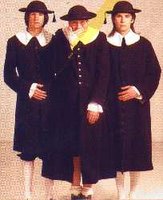

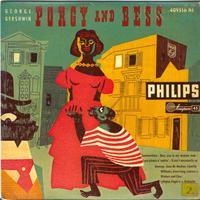
I have a theory that white America has always had a certain fascination with, and perhaps even jealousy of, African-American culture. I think Elvis felt it, and you can't listen to stuff by The Beatles (they were heavily influenced by American culture and rhythm and blues music) such as Introducing The Beatles and not hear the influence of Motown, Stax, or Tamla (not to mention Paul McCartney's impressive Little Richard imitation). Whatever it is, George Gershwin was presumably inspired enough after reading "Porgy" by DuBose Heyward to begin working on what would become the 1934 stage musical Porgy & Bess. For me, the best instrumental version of the song was done by Charlie Parker on Charlie Parker with Strings from 1949. In its two minutes and forty-eight seconds is all the mystery and thick, humidity of a hot summer night in Charleston.


Van Halen did a great cover version of the Martha and The Vandellas classic on their 1982 album Diver Down. That album boasted three other cover tunes: "Where Have All the Good Times Gone" (an old Kinks tune, second one for Van Halen), "(Oh) Pretty Woman", and "Happy Trails" (yes, the Roy Rogers thing). Due to this fact, not surprisingly, Eddie despises the song and the album. I think he should take a fresh listen to Roth-era Van Halen and readjust his attitude. People talk about how The Clash was like the punk Beatles, I'd argue that Van Halen was the Californian, hard rock/metal Beatles.


I know, I know...it's a cliche (probably all my choices are!), but few pop songs capture so well the feeling of loss that can come at the end of summer.

That picture was taken during Sinatra's honeymoon with Ava Gardner. They knew as the press followed them to get this shot, that their marriage was doomed (due to a lack of privacy, among other reasons), much like the summer itself. This is one he definitely lived. "Summer Wind" entered the Billboard Charts on September 3, 1966, hit its highest position of twent-five, and stayed on the chart for a total of seven weeks. Not bad for a 50-year-old, toupe-wearing, former big band singer in the era of long hair and The Beatles.
runners-up: "Indian Summer", "Things We Did Last Summer"
 Apparently white was in that year. The Beatles' "White Album" (The Beatles) was also released in 1968.
Apparently white was in that year. The Beatles' "White Album" (The Beatles) was also released in 1968.Live in '72
What I love most about this is the Brian Jones-played sitar track, which is periodically mixed in and out of the overall recording. Jones also plays tamboura, which is an Indian drone instrument. It's strange stuff like that that made the music of the 1960s so interesting. I also love how it sort of takes off like a jet. The rhythm is rolling, as one would expect.
There you have it. Not a top ten (eleven, actually) or "greatest" or "best" list, just a group of songs that capture a summer feeling.
Subscribe to:
Posts (Atom)